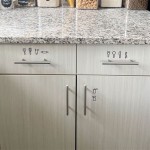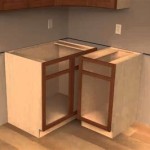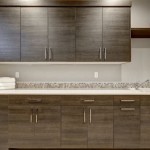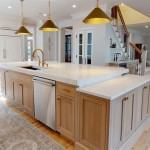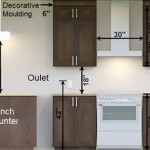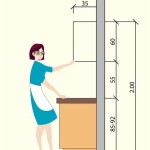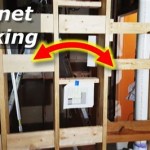Thermoplastic Kitchen Cabinets: A Comprehensive Overview
Thermoplastic kitchen cabinets have become a popular choice for homeowners seeking a blend of affordability, durability, and aesthetic versatility. Thermoplastic, a type of polymer that becomes pliable when heated and hardens upon cooling, offers numerous advantages over traditional cabinet materials like wood or laminate. This article will delve into the properties, benefits, considerations, and maintenance of thermoplastic kitchen cabinets, providing a comprehensive understanding for informed decision-making.
At its core, thermoplastic kitchen cabinets consist of a core material, typically medium-density fiberboard (MDF), which is then heat-fused with a thin layer of thermoplastic vinyl. This vinyl layer is available in a wide variety of colors, textures, and patterns, allowing for near-limitless design possibilities. The fusion process creates a seamless, smooth surface that is resistant to peeling, chipping, and cracking, common issues encountered with painted or laminated cabinets.
The popularity of thermoplastic stems from several factors. First, the material’s cost-effectiveness makes it an attractive option for budget-conscious homeowners. Second, the smooth, non-porous surface is easy to clean and maintain, resisting stains and water damage. Third, the versatility of design allows for replicating various wood grains and styles, providing the aesthetic appeal of natural wood without the associated cost and maintenance.
Key Advantages of Thermoplastic Kitchen Cabinets
Thermoplastic cabinets offer a compelling set of benefits that contribute to their increasing popularity in modern kitchens. Understanding these advantages is crucial for evaluating whether they align with specific needs and preferences.
Durability and Resistance: One of the primary benefits of thermoplastic cabinets is their durability. The vinyl layer is resistant to scratches, dents, and stains, making it a robust option for high-traffic kitchens. Unlike painted wood cabinets, thermoplastic does not require frequent touch-ups or repainting. The seamless fusion with the MDF core eliminates edges where moisture can penetrate, preventing swelling and warping, common problems encountered in humid environments. The material's resistance to heat also makes it less prone to damage from cooking splatters and steam.
Ease of Maintenance: Cleaning thermoplastic cabinets is remarkably simple. The smooth, non-porous surface prevents dirt and grime from adhering, allowing for easy removal with a damp cloth and mild detergent. Unlike wood cabinets, thermoplastic does not require special polishes or waxes. Its resistance to stains also minimizes the risk of permanent discoloration from spills. This ease of maintenance translates to significant time and effort savings for homeowners.
Design Versatility: Thermoplastic offers a remarkable range of design possibilities. The vinyl layer can be molded into various shapes and styles, including flat panel, raised panel, and shaker designs. Furthermore, it is available in a vast array of colors and textures, allowing for customization to match any kitchen décor. Thermoplastic can effectively mimic the look of natural wood, providing the aesthetic appeal of traditional designs at a lower cost. The seamless finish also contributes to a modern, streamlined look.
Factors to Consider Before Choosing Thermoplastic Cabinets
While thermoplastic cabinets offer numerous advantages, it's crucial to consider potential drawbacks before making a purchase. Evaluating these factors ensures a well-informed decision that aligns with individual needs and expectations.
Heat Sensitivity: While thermoplastic is generally heat-resistant, prolonged exposure to high temperatures can cause delamination or discoloration. It is essential to avoid placing thermoplastic cabinets directly adjacent to ovens or stovetops without adequate heat shielding. Using heat-resistant mats or spacers can provide additional protection. It’s crucial to consult the manufacturer’s guidelines regarding temperature tolerances and appropriate installation practices.
Repair Limitations: Although thermoplastic is durable, damage can still occur. Minor scratches may be repairable with specialized touch-up kits. However, significant damage, such as deep gouges or delamination, may require professional repair or even replacement of the entire cabinet door or drawer front. Unlike wood cabinets, which can be sanded and refinished, thermoplastic repairs are often more complex and may not yield a seamless result. The availability of matching replacement components should also be considered.
Potential for Off-Gassing: Some concerns have been raised regarding the potential for off-gassing from thermoplastic cabinets, particularly in the form of volatile organic compounds (VOCs). It is crucial to select cabinets that meet established indoor air quality standards, such as those certified by organizations like the California Air Resources Board (CARB) or Underwriters Laboratories (UL). Look for cabinets labeled as low-VOC or formaldehyde-free to minimize potential health risks. Proper ventilation in the kitchen can also help mitigate any off-gassing concerns.
Maintenance and Care of Thermoplastic Kitchen Cabinets
Proper maintenance and care are essential for preserving the appearance and longevity of thermoplastic kitchen cabinets. Adhering to recommended cleaning practices and avoiding harsh chemicals can prevent damage and ensure years of reliable use.
Regular Cleaning: The key to maintaining thermoplastic cabinets is regular cleaning with a damp cloth and mild detergent. Avoid abrasive cleaners or scouring pads, as these can scratch or dull the surface. For stubborn stains, a solution of baking soda and water can be applied gently. Rinse thoroughly with clean water and dry with a soft cloth. Routine cleaning prevents the buildup of dirt and grime, preserving the cabinets' original luster.
Avoiding Harsh Chemicals: Harsh chemicals, such as bleach, ammonia, or strong solvents, can damage the thermoplastic surface. These chemicals can cause discoloration, etching, or even delamination. Always test any cleaning product in an inconspicuous area before applying it to the entire cabinet. Opt for gentle, pH-neutral cleaners specifically designed for use on vinyl or plastic surfaces.
Protecting from Heat: As previously mentioned, thermoplastic cabinets are susceptible to damage from prolonged exposure to high heat. Use heat shields or spacers when installing cabinets near ovens or stovetops. Avoid placing hot pots or pans directly on the cabinet surface. When using self-cleaning ovens, ensure adequate ventilation to prevent excessive heat buildup. These precautions will help prevent warping, discoloration, or delamination of the thermoplastic material.
Addressing Scratches and Minor Damage: Minor scratches can often be repaired with specialized touch-up kits designed for thermoplastic surfaces. These kits typically include a color-matched repair compound and a sealant. Follow the manufacturer’s instructions carefully to ensure a seamless repair. For deeper gouges or more significant damage, consult a professional cabinet repair specialist. Promptly addressing scratches and minor damage can prevent further deterioration and maintain the cabinets' overall appearance.
Checking Hinges and Hardware: Regularly inspect cabinet hinges and hardware for loose screws or damaged components. Tighten loose screws to prevent doors from sagging or becoming misaligned. Replace damaged hinges or handles promptly to ensure proper functionality and prevent further damage to the cabinet structure. Lubricating hinges occasionally can keep them operating smoothly and prevent squeaking.
In conclusion, thermoplastic kitchen cabinets offer a compelling combination of affordability, durability, and design versatility. Their resistance to moisture, ease of cleaning, and wide range of aesthetic options make them a popular choice for modern kitchens. However, potential drawbacks, such as heat sensitivity and repair limitations, should be carefully considered before making a purchase. Proper maintenance and care are essential for preserving the longevity and appearance of thermoplastic cabinets. By understanding the properties, benefits, and limitations of this material, homeowners can make an informed decision that aligns with their specific needs and preferences, ultimately creating a beautiful and functional kitchen space.

Thermoplastic Kitchen Cabinets Cuisines Beauregard

Cuisines Beauregard Kitchen Project 340 Thermoplastic Urban

Thermoplastic Prémoulé

Thermoplastic Prémoulé

Thermoplastic Prémoulé

Cuisines Beauregard Kitchen Project 340 Thermoplastic Urban

Thermoplastic Kitchen Cabinets Good Choice Or Best To Avoid Smart Tips

Thermoplastic Cabinetry For Kitchen And Bath Fabrique Plus

Thermoplastic Prémoulé

Cuisines Beauregard Kitchen Project 340 Thermoplastic Urban
Related Posts

